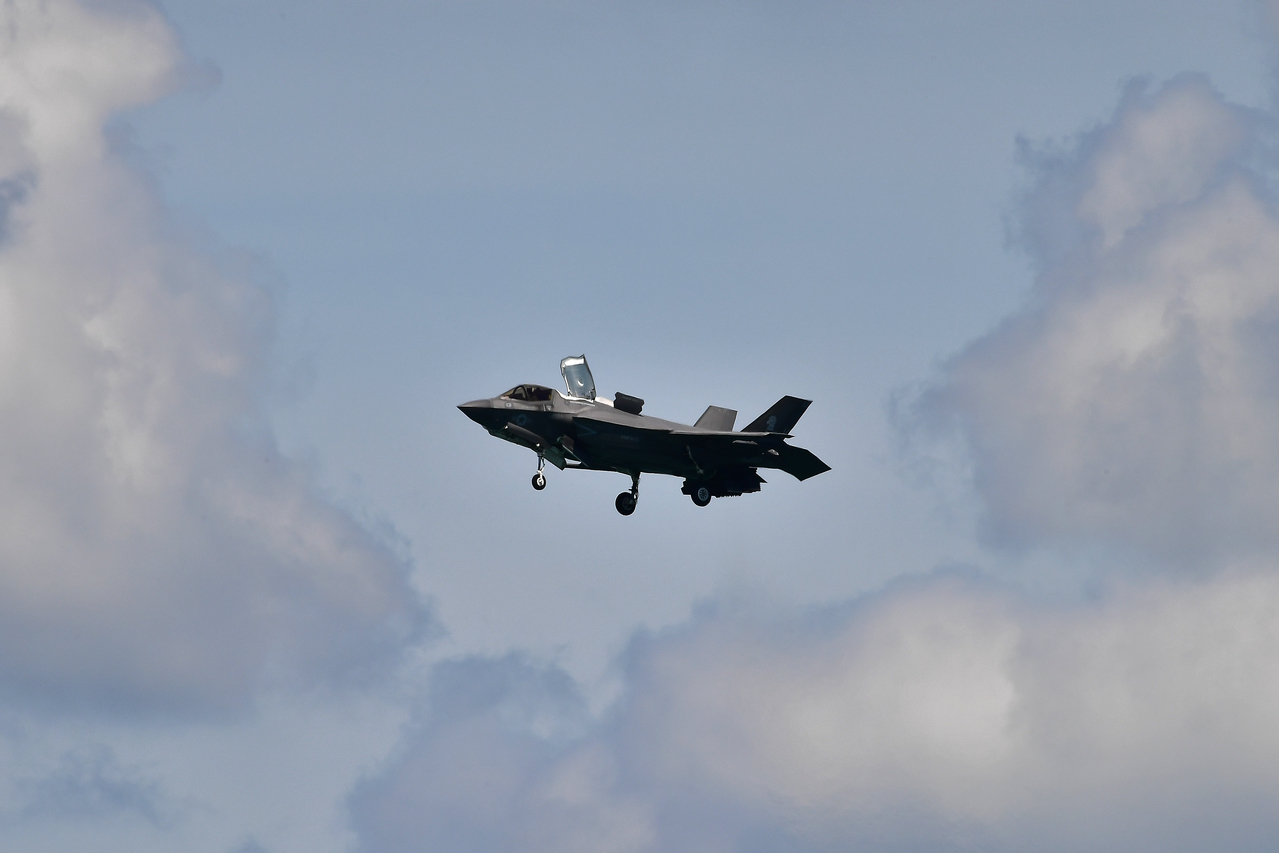Debate on ministries' budgets: Defence
Singapore in final stages of acquiring four F-35s
SAF training facilities in Shoalwater Bay to be ready by 2024, and Greenvale by 2028
Sign up now: Get ST's newsletters delivered to your inbox

A US F-35B Joint Strike Fighter at Singapore Airshow on Feb 15, 2020. The US government and Congress have approved the sale of four F-35s to Singapore, with an option for Singapore to purchase eight more.
ST PHOTO: LIM YAOHUI
Follow topic:
Singapore is in the final stages of acquiring four next-generation stealth fighter jets, which are scheduled to be delivered around 2026, said Defence Minister Ng Eng Hen yesterday.
He told the House that the United States government and Congress have approved the sale of four F-35s, with an option for Singapore to purchase eight more.
When the F-35 Joint Strike Fighters are delivered, they will be deployed in the US for training and in-depth evaluation, he added.
The F-35s are to replace the Republic of Singapore Air Force's (RSAF) ageing fleet of F-16s, which face obsolescence beyond 2030.
Speaking during the debate on his ministry's budget, Dr Ng said Singapore has decided on the "B" variant of the aircraft, which can take off from a shorter runway and land vertically - "an important feature in land-scarce Singapore".
Responding to Workers' Party chairman Sylvia Lim (Aljunied GRC) on the problems the F-35 programme has faced, Dr Ng said the new planes will be evaluated fully - this will include cost and maintenance issues - before the Ministry of Defence commits to a full fleet.
Giving an update on training areas, he noted that for each Singapore Armed Forces (SAF) unit, effective training makes the "decisive difference".
"In an uncertain landscape, we must raise, train and sustain units within the SAF to deal with both conventional and unconventional threats," he added.
Dr Ng said the facilities being developed in Shoalwater Bay and Greenvale, under the Comprehensive Strategic Partnership with Australia, have made significant progress and will provide best-of-class training facilities.
An ammunition storage building was completed last year, and combined arms air-land ranges are now being developed for the army and the air force to train together with tanks, infantry fighting vehicles, drones, artillery and other platforms.
An urban operations live-firing facility for air and combined arms live firing in an urban environment will also be built.
Construction at Shoalwater Bay is expected to be completed by 2024, and at Greenvale by 2028.
When these facilities are completed, the SAF will be able to conduct integrated training across all three services, involving up to 14,000 troops and for up to 18 weeks a year, he said. Currently, up to 6,600 Singapore troops conduct training in Australia each year for up to six weeks.
For the navy, its ships have ample opportunities to train overseas, said Dr Ng. For instance, the Republic of Singapore Navy will take on a key leadership role later this year in the world's largest multilateral maritime exercise, the Rim of the Pacific.
As for the air force, an agreement inked with the US last December to establish a training fighter detachment in Guam by the end of the decade will allow the RSAF to deploy its fighter jets and supporting assets there for training.
The airspace around Guam, together with training facilities, will allow the RSAF to conduct larger-scale as well as more complex and realistic air-to-air and air-to-ground training, Dr Ng said.
"At the same time, this detachment in Guam, alongside other fighter deployments in Australia, India and Thailand, will allow quick redeployment back to Singapore when required," he added.
In an interview, Senior Lieutenant-Colonel Mark Tan, who led a training deployment of RSAF fighters to Guam in 2017 for four weeks, said having a permanent detachment there would mean more airmen can be exposed to training in such a large airspace.
The Guam airspace, which is more than 80 times the size of Singapore, allows weapons to be employed at stand-off, or the maximum range, to hone the airmen's beyond-visual-range skills, added Senior Lt-Col Tan, 41, deputy commander of the fighter group under the Air Combat Command.
"Our Singapore airspace, compared to Guam's, is a bit like fighting in a phone booth. Whereas when you go to Guam... you're able to employ to the full capabilities of your aircraft and weapon systems," he said.
"The airspace resource... allows us to maximise the capabilities of our platforms, it allows our people to train realistically, and it ensures that we are an operationally ready air force."

